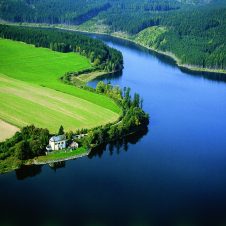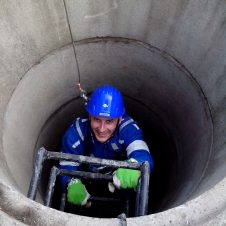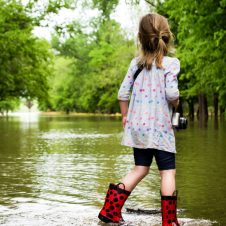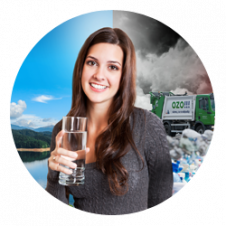Thematic articles
Projects
-
Ostrava rivers for sports boating
-
Water treatment using magnetic field
-
deRadon – “Cleaner wells guaranteed”
-
Nanopaint
-
Algae producing nanogold
-
Helper in Hydrology – Floreon+
-
Nanoparticles in the role of an environmentalist
-
Cones cleaning water
Ostrava rivers for sports boating

The city of Ostrava is currently preparing an investment plan for the use of Ostravice, Odra and Opava rivers for sports (without motor) boating. The company AQUATIS a.s. is preparing the investment plan and it should be ready in June 2018.
Project Goals:
- Make it possible to fluently and safely navigate the Opava River from Lake Hlučín with a connection to Odra all the way to the Polish border, which will enable those interested to rent a boat on Lake Hlučín and return it in an attractive location in Landek.
- Make the Odra River navigable from Polanka nad Odrou all the way to Bohumín with a chance to continue to Poland
- Build a slalom canal for international races on Lake Hlučín in order to provide good quality background for training and race organization (with a possibility of being rented to the public), which is completely missing in the Moravian-Silesian Region.
- Remove migration barriers for aquatic animals
- Increase tourism in the location by means of one-day or two-day (even more days if it continues to Poland) navigation with the possibility of related services (rental of boats, bicycles, roller blades, refreshments, etc.)
Making the rivers navigable was divided into two successive stages depending on expected capital expenditure and urgency of implementation:
Stage I
- Embarkation and disembarkation points for boating people
- Boulder chutes
- Securing of weirs and riverbed drops
- Camping sites
Anticipated capital expenditure: CZK 42.8 mil.
Stage II
- Combined fishway structures and sports sluices
- Man-made canal in a location by Lake Hlučín, recreational use of Vrbice lakes
Anticipated capital expenditure: CZK 161.8 mil.

- Place
- VŠB - Technical University of Ostrava
- Website
- http://www.zlepsisitechniku.cz/kategorie/technicke-vychytavky/
Water treatment using magnetic field

Any solid particle substance which has magnetic properties can be influenced by a magnetic field. For many years, the university team has been engaged in research in the field of magnetism. Their suggestions and improvements of the magnetic field generator are used in industrial plants that are beneficial to all of us, whether they are magnetic flaw detectors that detect manufacturing and operating defects in steel pipes and cables or new materials for data storage – CD and DVD.
Promising application of their research is the elimination of mechanical parts in drinking water. Depending on the degree of pollution in a given location, it is good to clean water, because we drink it, but also to prevent impurities from clogging kitchen appliances and water pipes themselves. The existing filters located in pipes contained an electromagnet, or they used the phenomenon that each conductor through which the electric current is passing also has the magnetic properties.
The indisputable advantage of their device is an autonomous solution, i.e. it is independent of the electricity distribution network. The base consists of a ring with permanent magnets produced from the rare earths. These types of magnets are characterized by high values of bulk density of magnetic energy. This makes it possible to produce a strong magnetic field in the ring cavity. After attaching the ring to the mechanical water filter, the field will affect the particles entrained in the water piping. Particles (dirt) are gradually deposited on the inside of the mechanical filter. We can simply take it out and remove the dirt by rinsing it under running water, screw it back, and the separation may continue.
Their facility can be used wherever water flows through water pipes. This will be most certainly appreciated by owners of weekend houses and cottages, or users or objects without an electrical connection. Currently, they are in contact with the commercial sector and gather all the necessary documents, results of measurements and analysis of water and impurities trapped to start industrial production.
The Nanotechnology Centre and the Institute of Physics, VŠB-TUO, participate in this research
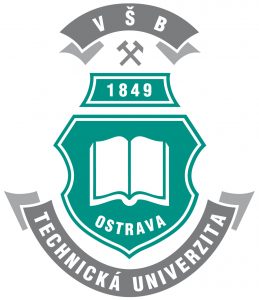
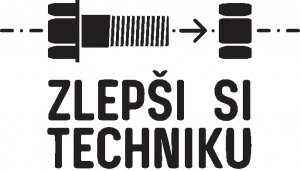

- Place
- VŠB - Technical University of Ostrava
- Website
- http://www.zlepsisitechniku.cz/kategorie/technicke-vychytavky/
deRadon – “Cleaner wells guaranteed”

You have surely heard of radon, possibly during chemistry class at school or perhaps in connection with the radon risk. The danger of radon ensues from the occurrence of this radioactive gas in bedrock, from which it is absorbed by water, and the subsequent risk of its release and inhalation. The danger of radon consists in the fact that, due to its ionisation capability, it is able to damage the structure of DNA and cause uncontrollable cell reproduction. Waterworks and water-treatment plants can deal with radon. But radon can be found in the water that fills thousands of private wells. This radon escapes from the water and poses a threat to people who come into direct contact with this dangerous gas when, for example, drawing water from a faucet, but even more so when showering.
In order to remove radon from water, the university team developed the deRadon system, which effectively serves the intended purpose. deRadon comprises a device that is only somewhat larger than an ordinary water-heater and works on the following principle: air is forced by a compressor into approximately twelve tubes, each of which contains hundreds of thin, hollow fibres. The fibre wall is perforated with openings ranging in size from 10 to 100 nanometres. Drawn water flows around the tubes. Whereas droplets of water do not penetrate the interior of the fibres, radon fumes do and are then carried by the air current harmlessly into the outside atmosphere. The whole process is modelled on the properties of Gore-Tex fabric – drops of water do not penetrate the interior because of the material’s outstanding property called surface tension, though steam and gas pass through it to the outside.
The deRadon device is patented as a utility model and is intended for all owners of water resources whose wells are located in places with heightened occurrence of radon. Currently, deRadon is used in households with separate water sources dug out of ore or granite bedrock, where there is a heightened risk of radon, such as in the Jeseníky, Beskydy and Vysočina areas.
Faculty of Safety Engineering, VŠB – Technical University of Ostrava. The instrument is distributed by company Vodní zdroje Chrudim, s.r.o.



- Place
- VŠB - Technical University of Ostrava
- Website
- http://www.zlepsisitechniku.cz/kategorie/technicke-vychytavky/
Nanopaint

Have you heard about coating materials that are durable, abrasion-resistant, waterproof and harmless? These are terms that you read on almost every can of paint. But have you also heard about paint that can effectively eliminate harmful substances and bacteria? No? Allow us to tell you about it.
The university team has developed special powdered materials that have a range of fineness comparable to that of flour to coarse-grain kitchen salt. Their prime ingredient is a clay material, most commonly kaolinite, which is a readily available material used for making ceramics. Particles of these clays have the shape of discs, which you can imagine as metal coins, and nanoparticles of the secondary ingredient – metal oxides such as TiO2 or ZnO – are bound to their surface. When the surface of these composites is exposed to light, very reactive particles are created which function as traps for harmful substances and bacteria in the air and water. This is very beneficial for both the construction industry as well as for the environment.
They mix these powdered materials into paint, whose properties they can thus change literally at the molecular level. Thanks to the reactive capabilities of the nanoparticles, such coating materials have the parameters of the highest-quality paint and are finding ever broader applications.
Uses for nanocomposites can be found in numerous industrial sectors, for example in the construction industry as an additive in self-cleaning construction and coating materials, as an additive in plastics and as a medium for cleaning wastewater and gases. A typical example is usage in hospitals and other healthcare facilities, where strict rules for cleanliness and hygiene are in force. The nanoworld offers seemingly invisible improvements, but with enormous potential to enrich our “big” world.
Nanotechnology Centre, VŠB – Technical University of Ostrava



- Place
- VŠB - Technical University of Ostrava
- Website
- http://www.zlepsisitechniku.cz/technicke-vychytavky/rasy-vyrabejici-nanozlato/
Algae producing nanogold

In addition to producing jewellery, gold is widely used in industry, technology, as a material for making electrical computer components, joint replacements in medicine, chemists work with it. Research showed that nanogold has excellent catalytic properties (much like platinum or palladium), and can accelerate or retard chemical reactions. Particles that have at least one dimension in the nanometer range have a larger reactive area and their catalytic properties will increase. Apart from the purely chemical methods for preparing nanoparticles, there is one more chemical-biological way, and we got that route.
In the university Bionanotechnology Laboratory, they use algae with siliceous structures to prepare nanogold. Diatoms and golden algae (chrysomonades) have unique features, they represent the largest biomass on Earth and, in addition to that, they can move. If these algae are mixed with highly diluted acid solution of tetrachlorogold acid, after a short time, gold nanoparticles are eliminated, they are stabilized and become part of cellular slime on siliceous algae structures. The elimination (reducing) of gold from the solution takes place due to the effect of various biomolecules that living cells produce when preventing the toxic effect of metal cations.
The resulting gold nanoparticles may have a variety of uses, for example in the catalytic decomposition of carbon monoxide. They accelerate the decomposition of hazardous substances such as nerve poison soman and VX agent. In the future, they are considering the disposal of pollutants in contaminated soil, water, air, clothes using nanoparticles of gold or silver. For these purposes, other biomass – for example plant – may be used, as its acquisition is not as complicated as in the case of microorganisms; it can also represent a new use for bioorganic or waste material.
Ladies would probably prefer wearing gold on their neck rather that seeing it in the laboratory, but can assure them that during one month, they prepare 1.5 g of silica boxes with organic residues with purple (!) gold nanoparticles invisible to naked eye. Although it is not enough to produce jewellery, science can achieve great things even with such a small amount of rare metal.
Nanotechnology Centre of VŠB – Technical University of Ostrava in cooperation with the State Institute for Nuclear, Chemical and Biological Defence.



- Place
- VŠB - Technical University of Ostrava
- Website
- http://www.zlepsisitechniku.cz/kategorie/technicke-vychytavky/
Helper in Hydrology – Floreon+

Can you remember some of the action film villains who wanted to destroy the world with their super computers? There have been lots of them! The university Floreon+ system is one of its kind and, conversely, can save the part of the world where we live.
The objective of the Floreon+ is to model, predict and support the resolution of crisis situations, with particular focus on the Moravian-Silesian region. This system, which is being developed within a research and development project, allows for easy integration of various topic-specific areas, regions and data thanks to its flexibility and openness.
Floreon+ is currently being used, for example, by the Integrated Security Centre of the Moravian-Silesian Region where it monitors the behaviour of the main water streams in the MS Region in real time and is able, for example, to detect an impending flood. It simulates and predicts its course and minimises its impact by suggesting a timely measure. Such a measure can be the timely evacuation of population from the critical areas, the construction of an anti-flood barrier or a plan for securing transport accessibility of the affected areas.
In addition to that, the Floreon+ system can also be used to predict air pollution and pollution of water streams in the event of leaks of dangerous substances, which occur, for example, during environmental accidents. However, all these simulations are so calculation-intensive and data-intensive that it is not within the capacity of a person or a standard computer to perform these tasks in the necessary timeframe. This is why the Floreon+ system is installed on super computers, which repeatedly perform these tasks with machine precision and tirelessness in seconds or minutes and, moreover, in many variants that can occur in reality.
A similar system was missing, for example, during the tsunami in Indian Ocean in 2004. We have it now. To the maximum possible extent, it helps to create a safe environment for the population in the area it covers. And it also provides certainty that a citizen will be warned and will be saved, along with their possessions, in a timely manner during extraordinary events.
National super computer centre IT4Innovations at VŠB – Technical University of Ostrava



- Place
- VŠB - Technical University of Ostrava
- Website
- http://www.zlepsisitechniku.cz/kategorie/technicke-vychytavky/
Nanoparticles in the role of an environmentalist

They are a million times smaller than a millimeter, but if they spread, they can cover a huge area. We are talking about nanoparticles, super tiny crystals, whose world we gradually uncover thanks to the latest technology. Specific properties of nanoparticles can, for example, be also utilized for the protection of the environment. Imagine a catalyst of exhaust gases from automobiles. A thin layer of a special powder is applied round its inner circumference. The resulting coating can destroy harmful substances produced by the combustion of petrol. In fact, when striking this surface, these substances are deformed and decomposed into simple gases – hydrogen and nitrogen. But even nanoparticles do not work as a perpetual motion machine, they need a supply of energy for their activity. For example, light. Thanks to it, they become more active “trap for pollutants” and they also decompose them significantly faster.
In university research, they focus on the preparation of so called semiconductor nanoparticles (e.g. titanium dioxide, zinc oxide), which can, with the help of sunlight, decompose toxic and poorly biodegradable substances. They are working on the problem of artificial production of hydrogen, inducing artificial photosynthesis and on new technologies of preparation of powders of nanoparticles. These are the instructions for producing the original mixtures of different metal salts and lye; they have already discovered twenty of them. All with a single goal. Helping man to protect the world in which we live. The nanoparticles treated in this way can, for example, convert greenhouse gases into harmless substances which find further application in the industry. They help us remove impurities from oil spills out of water. As coatings in hospital wards, they prevent the formation of mildew and destroy bacteria. They can also be used for the production of filters in chimneys and for wastewater purification. Nanoparticles are becoming an important tool in protecting the environment and improving the quality of life of people.
The research is conducted by the team led by Ladislav Svoboda from the Faculty of Metallurgy and Materials Engineering, VŠB – Technical University of Ostrava


Cones cleaning water

We would all like to have delicious, clean and especially safe water running from the tap. Wastewater treatment plants can deal with common foreign substances, but cleaning technology is often ineffective for the treatment of a large volume of water with very low concentrations of metals. For example, chromium with oxidation number six, which gets into wastewater from industrial production has adverse effect on the human body even in a small quantity, and it is regarded as a carcinogen.
Fortunately, scientists are constantly coming up with new ideas on how to solve this problem.
In university labs, they are studying the possibility of using cost-efficient method of biosorption. They find such plant materials or waste materials, which would be able to remove contaminants without having an adverse effect on the water. So far, they have explored a variety of common and cheap waste materials of natural origin, e.g. a mixture of Scots pine and Norway spruce cones, a wood-destroying fungus, seeds of peaches and apricots, walnut shells, orange peel, or sheep wool Merino. In the laboratory, the best results were achieved with wood-destroying fungus polypore and the mixture of cones, which are currently being tested for possible use in practice.
The university team has been dealing with the issue of the removal of hexavalent chromium and other pollutants from water for over 7 years. Based on the results of scientific studies, the most suitable selected biosorbent is tested in the laboratory or pilot plant conditions, which simulate the operation of the wastewater treatment plant. Currently, many scientific disciplines and workplaces focus on economical use of water, its protection and treatment. Their goal is to find an efficient, simple and cheap methods that may be applicable in the industry and ultimately benefit us all.
The Institute of Environmental Engineering (IEI) of the Faculty of Mining and Geology, VŠB-TUO


Fact sheets
Sources of drinking water

Percentage of drinking water taken from reservoirs (Kružberk, Šance, Morávka).

Percentage of drinking water taken from underground sources in Ostrava.
Water consumption
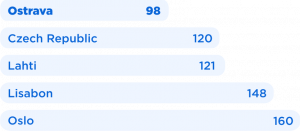
Daily water consumption (litres) per 1 inhabitant (2015). Ostrava performs very well on this measure – not only within the Czech Republic as a whole, but also compared with the other candidates for European Green Capital 2019.
Water consumption

Number of smart water meters (2017) transmitting automatic meter readings. Smart water meters also help users monitor use; if they detect unusual levels of consumption, the system sends an e-mail to the owner. Part of the Smart Metering project.
Water supply network
![]()
Total length of water supply network minus connecting pipes (2016).
![]()
Total length of connecting pipes (2016).
Water supply network

A non-invasive technology for cleaning water supply pipes using ice slurry. Ostrava was the first Czech city to test the system (2015).
Water supply network
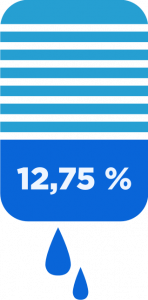
Total water losses from Ostrava’s water supply network in 2016. The second lowest annual losses in the history of the city’s water management company, and significantly below the average losses for Czech water companies (national average = 15.4 %).
Waste water

Percentage of households connected to Ostrava’s sewerage system (2015).

Percentage of households connected to sewerage systems in the Czech Republic (2015).
Waste water
![]()
The number of waste water treatment plants in Ostrava. The plant at Ostrava-Přívoz is a sophisticated technological installation achieving excellent quality in all areas of operation. The plant has sufficient capacity to allow for expansion in the upcoming years.
Waste water

Percentage of households connected to waste water treatment plants in Ostrava (2015).

Percentage of households connected to waste water treatment plants in the Czech Republic (2015).



